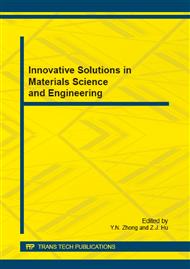p.258
p.263
p.267
p.271
p.275
p.280
p.285
p.289
p.293
Experimental Study of Wheel Rotating Speed Effect on Electrical Discharge Grinding
Abstract:
Electrical discharge grinding is used to machine polycrystalline diamond layer of cutting tools, which can effectively drill composite/titanium stacks in modern aircraft frames. In the machine, an electrode wheel is rotated to accelerate debris flushing to quickly recover the dielectric fluid between a spark gap. The aim of this study was to investigate the effect of the wheel speed on polycrystalline diamond removal rate for high erosion efficiency. Multiple wheel speeds were applied in a electrical discharge grinding machine under various pulse on-times and the volumetric removal rates were calculated by the precise position feedback of this machine over the time, which was obtained by the electrical waveform of discharges. The experimental results show that the removal rate increases with the wheel speed up to a limit at the low range and then declines at the high range. This indicates that the wheel speed needs to be optimized for high erosion efficiency under various discharge conditions such as different materials and pulse on-times.
Info:
Periodical:
Pages:
275-279
Citation:
Online since:
November 2014
Authors:
Price:
Сopyright:
© 2015 Trans Tech Publications Ltd. All Rights Reserved
Share:
Citation:


